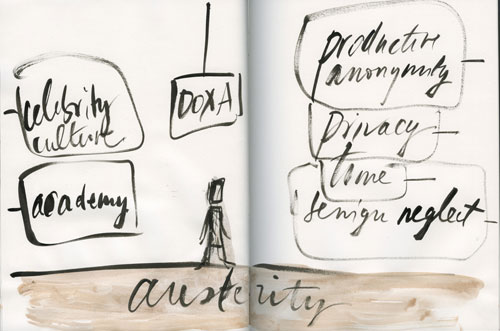August 24, 1976
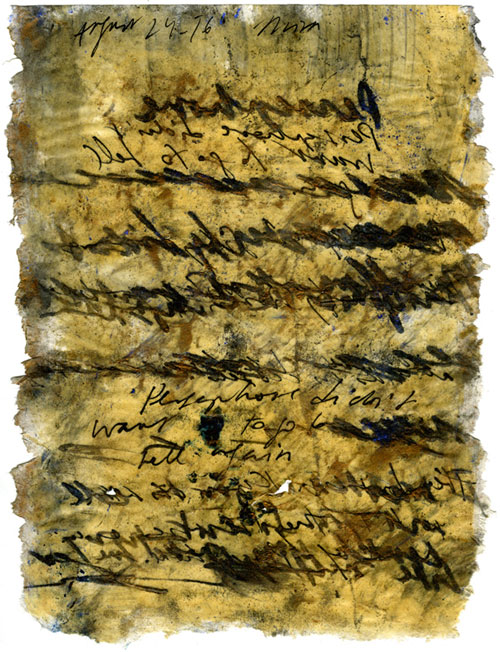

Mira Schor, Persephone, August 24, 1976. Ink and mixed media on rice paper, two sides, c. 12 x 9 in.
This week I have fallen in love with a word, the word Chthonic. I have often seen it and knew its basic meaning as denoting the underworld, but looking it up again in relation to a work I did on August 24, 1976, Persephone, I found it exactly described the psychic, creative, and also the economic spaces my paintings have sought to delineate in the past year. Chthonic. How do we fall in love with words these days? I clicked on the link in the Wikipedia entry for Persephone, and , at 2AM, having finally torn myself away from gazing at the definition on the screen, I jumped out of bed to go and gaze at the Wikipedia page some more…Chthonic, “it typically refers to the interior of the soil, rather than the living surface of the land.”
This work from 1976, Persephone indicates that in those early years of my life as an artist, I already was concerned about the patterns of my productivity in the studio, the summer/winter division in my studio practice, and most particularly the desire and the fear of lying fallow.

Mira Schor, page from exhibition catalogue, “Mira Schor: Paintings,” Dalhousie Art Gallery, Halifax, Nova Scotia, 1975.
Other resemblances to the mythological character were that I lived in the summer with my mother, in the role of the Demeter of myth, who made art downstairs while I worked upstairs, and under her protection I could immerse myself in my work and in the earth and the sea, and in the winter I lived in the city, the academy, the art world, as good a stand in for Hades as any as we use that name to denote the underworld. I need both, neither one nor the other alone would suffice. I get strength from solitude, from the rhythms of the tides and the simple pleasures of my small back yard and one large English oak tree, but I stride out into the crowded streets of New York City with a passion for the cultural richness and pride in the competitive forces packed into such a compact space, my place of birth and my home.
The duality is cast also as that of dream and wakefulness. The summer work in the chthonic space is the dream, the winter existence is one of wakefulness, of “reality.” But as the first line of the Japanese Noh play Atsumori suggests,
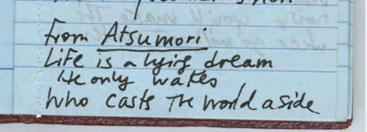
I recopied this line by hand in an annual diary every year for over thirty years until the world pulled away that kind of time
The duality extends to what I want my paintings to contain and express. I would not give up visual pleasure for theory, even this summer when, through this retrospective process of considering works made on specific summer days over decades, I have begun to think of the period during which “theory” most influenced me, from the early 1980s until the turn of this decade, as a period of the sacrifice of one part of my character as an artist, a period that perhaps is over although there is still a professional imperative to “keep up” with wherever the academy wants to apply its methods, language, doxa, and rewards to. But I also know that is ridiculous to claim this was a sacrifice since it was also my character and my desire that drove me. Even in the period I think of now as the dream period, I was involved with a feminist critique of power and the politics of challenging the canon of American modern art. There was never a moment that was not text- and history- based and politically engaged. I have always sought out the artwork and the theory that was seemingly most antithetical to my own practice, because it seemed necessary to keep the work from lapsing into sollipsism and sentimentality. I will not give up the critical and intellectual or the visual and intuitive, so I see that the task ahead is to continue to insist that both ways of being as an artist can and even must exist in the same works and in the same practice. So, like Persephone, I do live in two worlds. Often, as in the 1976 drawing, the duality is born out in the two-sidedness of the drawing, and this summer I have found myself making paintings that are reversible: the space is divided by a horizontal median line where the Chthonic meets the surface of the earth and the air above, but the painting can be viewed with the Chthonic below or above, because, thinking of the opening line of Atsumori, which is the dream world? The country, the ground, the summer? Or the city and winter?
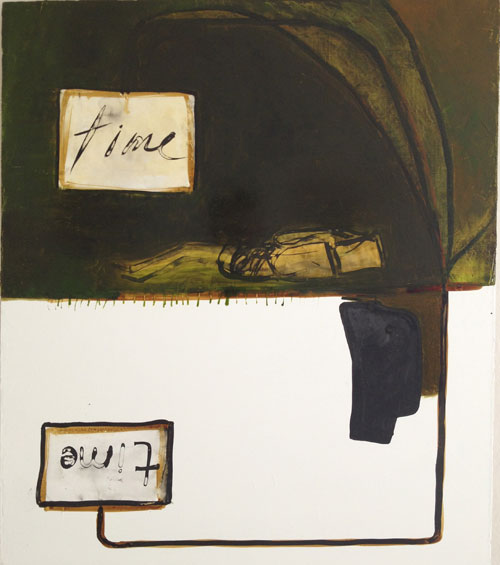
In this case, time is reversible:
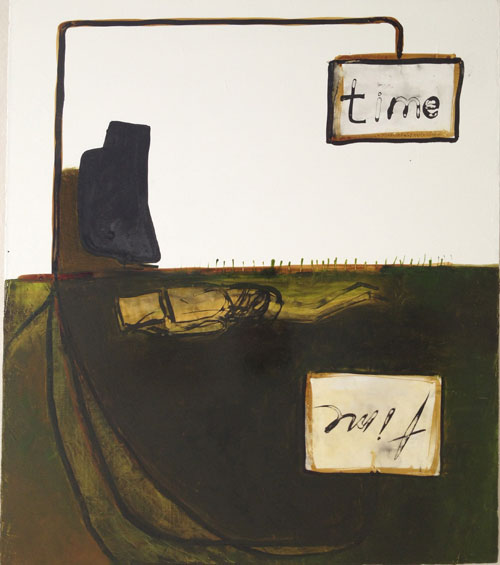
And even a painting whose title is Underground Garden, representing the fertility of the chthonic ground,
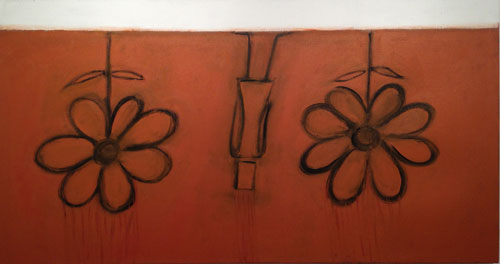
can also be viewed “upside down” so that the figure falling into the earth can also appear to rise up into it,
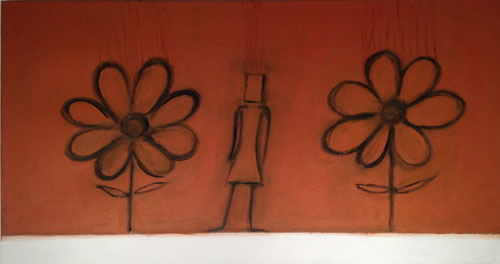
This summer my work has followed the line of the earth as a demarcation between sky and ground, austerity and fertility, public and private. I have focused on reversals and reversibility, where ground, and by that I mean underground, the matter of earth itself, the Chthonic, not the line of demarcation upon which we stand, can also be sky and the sky above can become the ground below.
I had started the summer wanting to address in my work the terms of contemporary economic existence I had sketched in a drawing earlier in the year, as the illustrated version of a short text I wrote for the Brooklyn Rail:
While keeping the visual premise of maintaining that line of demarcation between earth and air as the common ground linking painting to painting by that line rather than by any standard installation height, I found myself unexpectedly shifting to what seemed to me a more radiant engagement with nature than I had intended when the central theme would be the difficulty of thriving in a time of radical inequality and austerity, again blurring the distinctions between the dream and the real.
*This is most likely the last of my Day by Day in the Studio posts although, for once in a blue moon, I get to spend a few weeks more in the dream of the summer studio. I thank my subscribers and readers for their patience and I look forward to plunging A Year of Positive Thinking back into the world later this fall.

